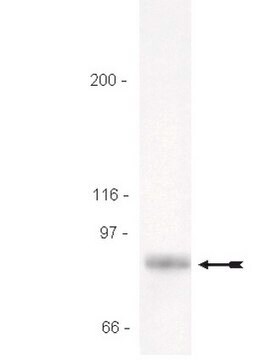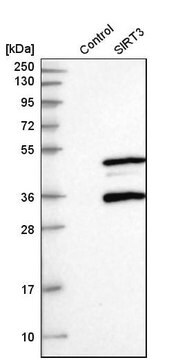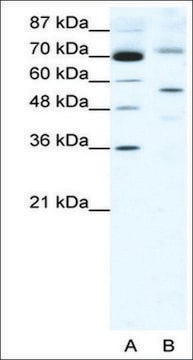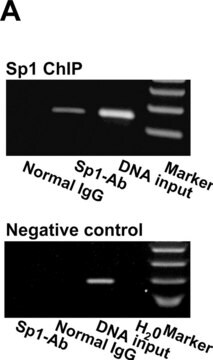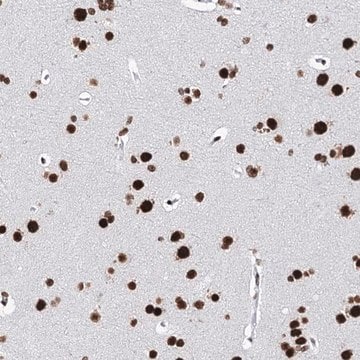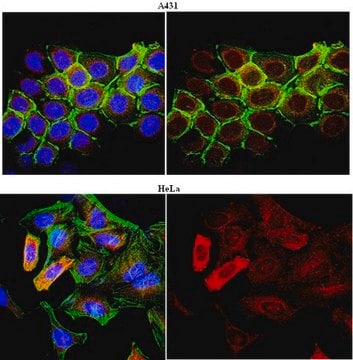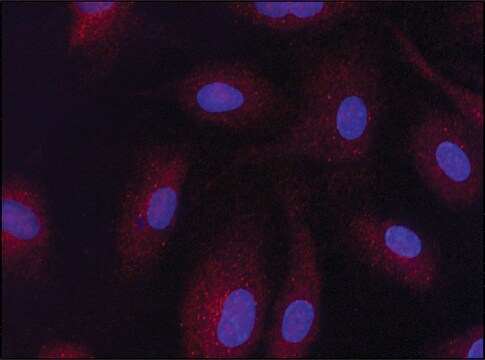07-1596
Anti-SIRT3 (CT) Antibody
from rabbit
Sinônimo(s):
SIR2-like protein 3 , mitochondrial nicotinamide adenine dinucleotide-dependent deacetylase, silent mating type information regulation 2, S.cerevisiae, homolog 3, sir2-like 3, sirtuin (silent mating type information regulation 2 homolog) 3 (S. cerevisiae
About This Item
Produtos recomendados
fonte biológica
rabbit
forma do anticorpo
purified antibody
tipo de produto de anticorpo
primary antibodies
clone
polyclonal
reatividade de espécies
human, mouse
técnica(s)
ELISA: suitable
immunohistochemistry: suitable
western blot: suitable
nº de adesão NCBI
nº de adesão UniProt
Condições de expedição
wet ice
modificação pós-traducional do alvo
unmodified
Informações sobre genes
human ... SIRT3(23410)
mouse ... Sirt3(64384)
Descrição geral
Especificidade
Imunogênio
Aplicação
This antibody has been shown by an outside laboratory to be suitable for ELISA (1:1000).
Immunohistochemistry:
This antibody has been shown by an outside laboratory to be suitable for histochemistry using human hepatocarcinoma tissue (1:50 – 1:100).
Epigenetics & Nuclear Function
Histone Modifying Proteins
Qualidade
1:250 dilution of this antibody detected SIRT3 on 10 µg of C2C12 lysate.
Descrição-alvo
forma física
Armazenamento e estabilidade
Nota de análise
C2C12 cell lysate
Outras notas
Exoneração de responsabilidade
Não está encontrando o produto certo?
Experimente o nosso Ferramenta de seleção de produtos.
Código de classe de armazenamento
10 - Combustible liquids
Classe de risco de água (WGK)
WGK 2
Ponto de fulgor (°F)
Not applicable
Ponto de fulgor (°C)
Not applicable
Certificados de análise (COA)
Busque Certificados de análise (COA) digitando o Número do Lote do produto. Os números de lote e remessa podem ser encontrados no rótulo de um produto após a palavra “Lot” ou “Batch”.
Já possui este produto?
Encontre a documentação dos produtos que você adquiriu recentemente na biblioteca de documentos.
Nossa equipe de cientistas tem experiência em todas as áreas de pesquisa, incluindo Life Sciences, ciência de materiais, síntese química, cromatografia, química analítica e muitas outras.
Entre em contato com a assistência técnica